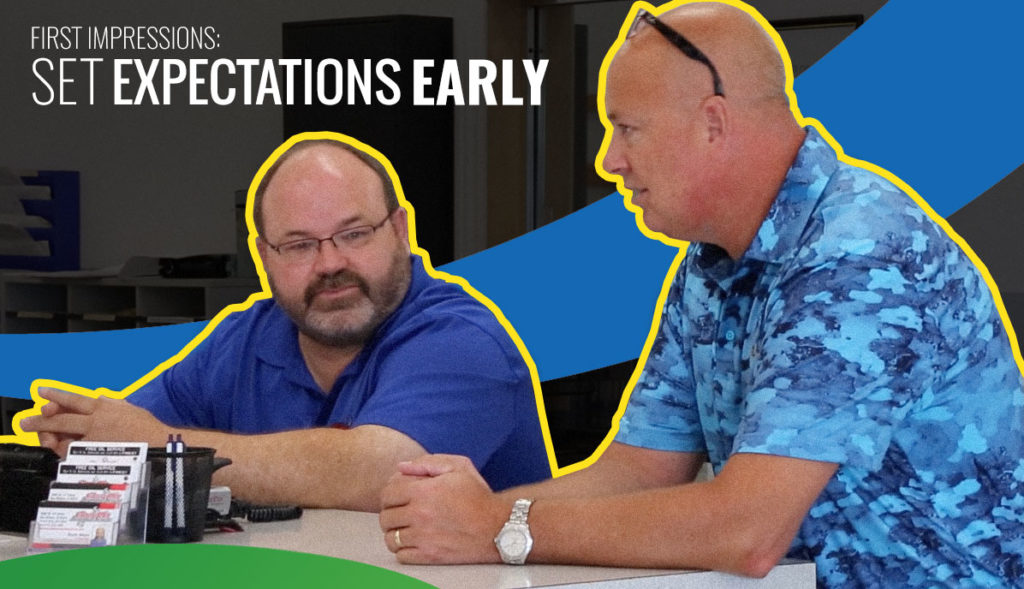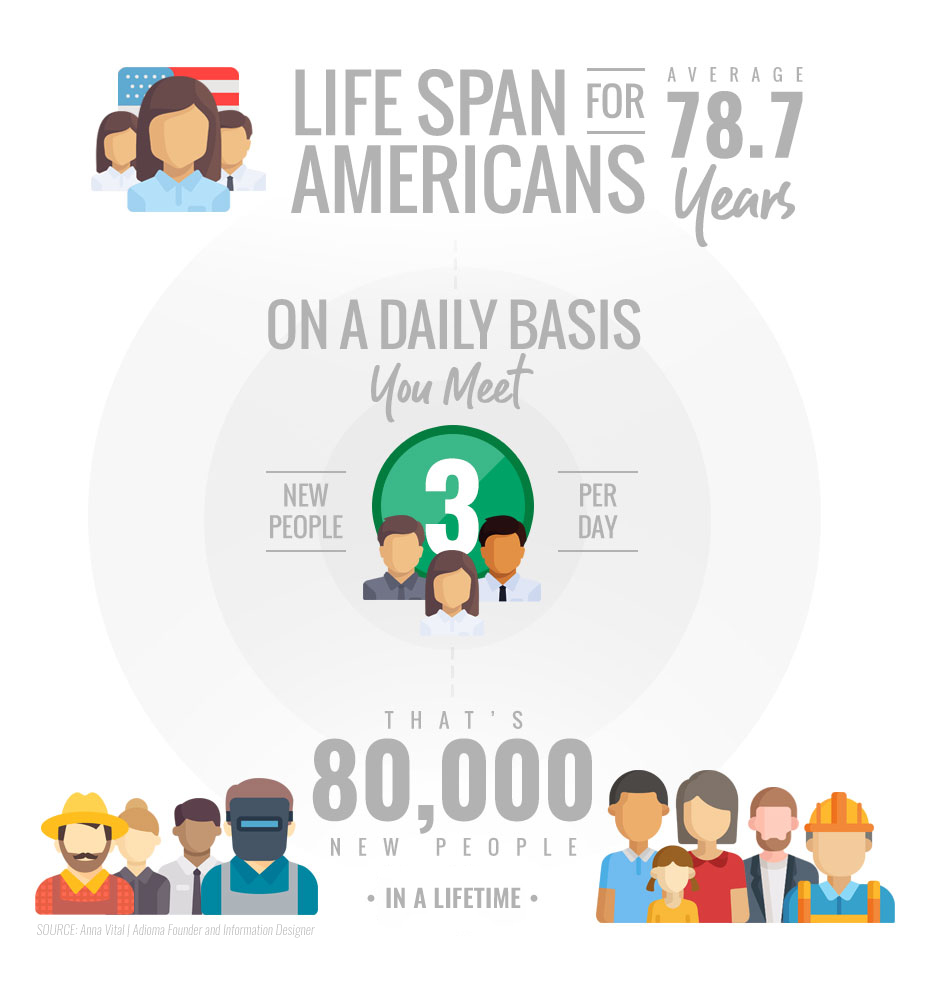From First Impressions to Raving Relationships
Most of us have been taught to trust our immediate “gut feelings.” Because of that trust we place in our intuitions, we often make fairly accurate decisions based on little information.
According to Malcolm Gladwell, author of Blink: the Power of Thinking without Thinking, humans are able to make good and sound decisions within moments. Also known as “thin-slicing”, this theory means that individuals recognize connections and are able to react to that “gut feeling” long before the brain catches on.
Due to this ability to “think without thinking”, a positive first impression is a core element to fostering any new client relationship. But the question is, what is a first impression truly worth?
Every raving client relationship starts with that positive first impression, shifts to a seamless transition, and then moves into consistent, trustworthy, and quality partnership.
HOW OFTEN DO FIRST IMPRESSIONS OCCUR?
Have you ever wondered how often you meet a new person or walk into a new business account? That number may be higher than you think.
According to the CDC (Centers for Disease Control and Prevention), the average life span for Americans is 78.7 years. After the age of five, we start remembering who we meet. If we take our memory into consideration, we can actually calculate the number of people we interact with every year.
For example, assuming we interact with at least three new people on a daily basis for an entire year, (78.7 – 5 years old) x 3 people/day for a year = roughly 80,000 people in your lifetime.
“On average, I personally meet three to four new people every day that I’m out-and-about with a route service representative,” Alex Wedgeworth, CITY district manager of Northeast Iowa, said. “It’s great because I am introduced to more contacts at each account, and if they contact me, I can put a name to a face.”
WHAT FIRST IMPRESSIONS MEAN IN BUSINESS
After meeting someone, you only have seven seconds to make a great first impression. But in business, passing that seven-second test with the decision maker doesn’t mean the job is done. Now, it is up to you to expand that positive interaction with the rest of the company through memorable and engaging experiences.
“First impressions set the base for the entire relationship,” Wedgeworth said. “A client is going to remember how you made them feel within that first interaction for quite some time.”
For example, in the uniform business, handling such a personal part of someone’s workday while making that experience a positive one is such a crucial aspect. When onboarding a new account, it’s important to take every step necessary to make sure the process is simple and seamless.
HOW THE TRANSITION WORKS
Expanding upon the first impression can be difficult because change always comes with some hesitation. Is this the right call? Did I make the right decision?
Hesitant clients are at a very delicate state. The reason they are making the change is that they believe you are the solution. They have given you their trust, and now the ball is on your court.
“I am always go in with a smile and a positive attitude,” Wedgeworth said.
Establishing the relationship by introducing yourself positively on day one will reassure the client that they made the right decision. It’s equally important to establish yourself as the industry expert so the client knows he or she is in good hands.
“I address concerns immediately,” Wedgeworth said. “It’s important because if they say that they have some concerns, and you say that you will get to it, but then you don’t actually follow through. Now you’ve lost all credibility, and that first impression is definitely damaged.”
WHAT STEPS TO TAKE WHEN ONBOARDING A NEW ACCOUNT
Understand the Client’s Existing Needs
The key to easing client hesitation is to always follow through and communicate thoroughly. Getting to know them upfront and understanding their business will not only help you better service the account, but it will also help develop the relationship into a long-lasting partnership.
Understand the Client’s Previous Vendor Issues
You always want to remember good experiences, but it is also hard to forget bad ones. Clients also tend to share bad experiences with others. But when you understand the client’s pain, you know exactly how to avoid it. Your client will be much more confident with the relationship if you can avoid even the smallest trigger points from their past provider.
Consider Different Industry Segments
Every company has unique needs depending on their industry. It’s important to take their industry into account during the course of onboarding to ensure their needs are coming first. For example, when it comes to industrial laundry clients, an account in the food processing industry cannot even operate without uniforms, so it is important to make sure you come prepared with a Plan A and a Plan B, just in case.
Another example includes those in the manufacturing industry. They may require safety uniforms that need to withstand wear-and-tear, whereas an account in the wholesale trade industry may have a need for professional apparel that is bright or colorful.
Set Expectations Early
Clearly defining your company’s offerings and capabilities ensures clients understand the conditions to which they are agreeing. That is where the saying of “under promise, over deliver” comes in handy. It is always better to “wow” your client than to disappoint them.
Make it Easy
Keep in mind that change is hard. You should take care of everything possible behind the scenes, aiming for a seamless transition from sales to service, so that the client is not overloaded with more work. They are looking to you to make their workday easier, not to give them more work.
Check In Often
A valuable client relationship doesn’t stop just because the contract is signed or the first 90-days is completed. One of the most important aspects of retaining clients is building upon the relationship even after the onboarding process is complete.
Identify Additional Opportunities
After servicing the new client for a few weeks, a business can easily identify additional opportunities. If they have too much or not enough product, you can adjust based on their usage. If there is another service or product they can benefit from, now is a perfect time to introduce ways you can help.
Assisting the client with these opportunities and becoming a total-solutions provider further builds the client-business relationship.
Encourage and Respond to Feedback
The client onboarding process can always be improved. Communicating with the client to learn about their personal onboarding experience is a valuable tool for improving the process.
THE ONBOARDING PROCESS BREAKDOWN
Taking complete ownership of the onboarding process is how you provide clients with peace-of-mind.
“We always maintain open communication,” Wedgeworth said. “We first figure out what the client needs, we get them sized for uniforms, and we figure out where the uniforms need to go. We stay in contact regularly to make sure everything goes correctly.”
CITY has found success in onboarding new clients by following these eight steps:
- A scheduled fitting time.
- A complete size-run of the chosen uniform available for personalized sizing.
- A comprehensive facility analysis and needs assessment.
- A confirmed first delivery date with transition checklist review.
- A seamless delivery transition with no lapse in service.
- An explanation of invoicing.
- A completed account audit within the first month to ensure your new program is running smoothly.
- Identification of additional opportunities in which we could help you and your business.
Continuous goodwill check-ins throughout the entire partnership is also the key to understanding the client’s needs and creating a long-lasting and wholesome partnership.
With an onboarding process like CITY’s, we take complete ownership so you have time to focus on what really matters – running your own business.


Comments
Comments are closed.